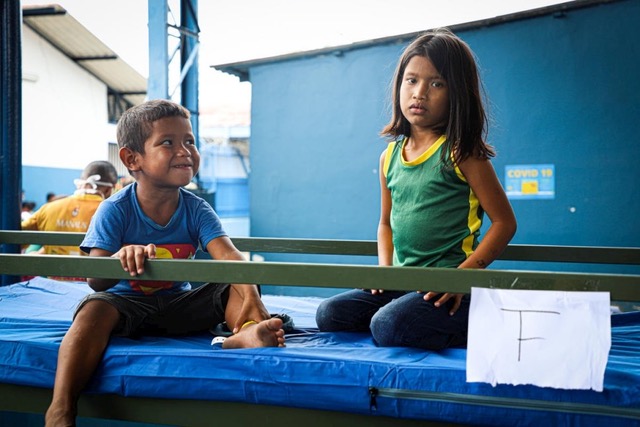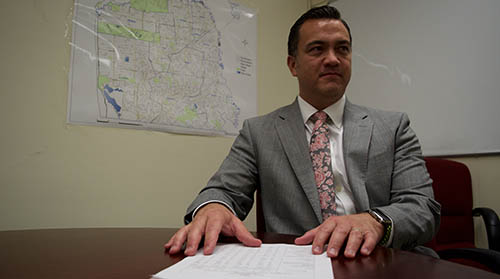In a briefing hosted by Ethnic Media’s “Week of Action” briefing, California pediatricians and experts discussed: The current rate of 5-11-year-old vaccinations, Parental hesitancy to vaccinate younger children, the need for children to be vaccinated, despite new data suggesting the inefficacy of the vaccine against Omicron for youth, and the mental health impacts of the pandemic on children
Dr. Jennifer Miller, Pediatrician, East Bay Pediatrics discussed the impact sharting that only 26% of kids had received the 2doses while 36% had only received one dose. This she attributed to the fact that many people still believe that kids don’t get covid. Unfortunately, this is not true because though it may not be as severe they are getting it and there have been cases of sickness, death, and covid recovery conditions affecting the eyes, lungs, etc. Often she said, these kids are in environments where there is obesity and other issues, and they have been impacted by the pandemic, “long covid” is a factor, confusion, shortness of breath, fatigue, malaise, etc. The mental health crisis is a big factor as they worry about getting sick and giving their parents. This leads to anxiety and depression exacerbated by missing out on normal activities and sickness everywhere and figuring out why their parents are worried about the kids getting the vaccines. She shared that adults are willing to get the vaccines for themselves but hesitant for their kids. Some are worried that the vaccines killed kids or were life-threatening, causing problems in the future for their kids, their fertility, etc. This is wrong because there is no data showing such side effects. They think corners were cut in producing the vaccines which are wrong. The vaccines are safe. These concerns are especially true in black and brown communities and families that are less trusting. She emphasized that the vaccines are safe and have been rigorously tested with mild side effects that go away compared to what covid would do. The vaccines are free, and no proof of insurance or citizenship is required. She finished by imploring parents to get the vaccines for their children.
Dr. Sohil Sud, MD, MA, Lead, Safe Schools for All California Department of Public Health, on his part has seen manifestations of covid as a pediatrician and as a father of two daughters who go to school. He shared that the trends today are favorable as positivity rates have gone down. The progress has been remarkable in a downward trend. Even though a high percentage of Californians have taken at least one vaccine dose we still need to acknowledge that some communities still lag behind. Across the board, California has moved ahead with the following:
- from masking to string recommendations which means though not required to enforce
- now recommending schools use a notification model called group tracing as opposed to quarantine. If a student tests covid positive they should isolate while others can and should stay in school, wear a mask, and be tested. This is because omicron is different and we need to match it. Rapid testing and action are needed as it spreads quickly.
- continue leaning on supporting school communities. Continue to provide resources. Vaccination clinics are still; being supported, supporting indoor quality, ventilation guidance, and funding to support schools, continue to provide ongoing support for testing programs.
He concluded that we have come a long way from where we started. Compared with other states California has mitigated the pandemic.
Beth Jarosz, Program Director, U.S. Programs and Deputy Director for KidsData, shared some slides with kids’ data reflecting a snapshot of child health during covid for counties, cities, school districts, etc. The data showed the impact of vaccination on the covid pandemic, reducing the risk of death but with varying rates widely by county. More broadly fewer emergency room visits and hospitalization among children. Currently, however, total; deaths declined in 2020. Mortality for ages 10-14 shows a troubling trend due to mental health issues. More data on kids can be found at kidsdata.org.
Dr. Veronica Kelley, Chief, Mental Health and Recovery Services at the Orange County Health Care Center discussed the mental health toll on kids 5-11. Affected by isolation in the past two years because of the absence of physical school or healthcare. 24% incidents of increase in emergency room visits for mental health issues. Kids have been affected by many losses such as 1st day of school, graduations, sports, ceremonies, and loss of innocence. Sustained survival mode has set in due to the above and causes mental challenges. 2/3rds of parents reported concern about the cognitive impact of the kids’ mental abilities. Historical trauma-affected communities are embedded in our DNA. Kids of color, LGBTQ, low-income kids, and immigrant households are at high risk of mental health. Increases of this nature are common but do not go on forever. These challenges are common and treatable. Kids and parents should reach out, build healthy relationships, get involved in activities and make new friends, and be serviceable as it helps self-esteem. Parents and caregivers should also look out through their actions. Do your best to provide a stable environment because kids are sponges. Talking about financial challenges or marital problems affecting kids. Look out for symptoms like anxiety, crying, loneliness, etc. Minimize access to products that can cause harm such as guns. Monitor how they spend time on the internet, be a voice in your community, and talk boldly.









